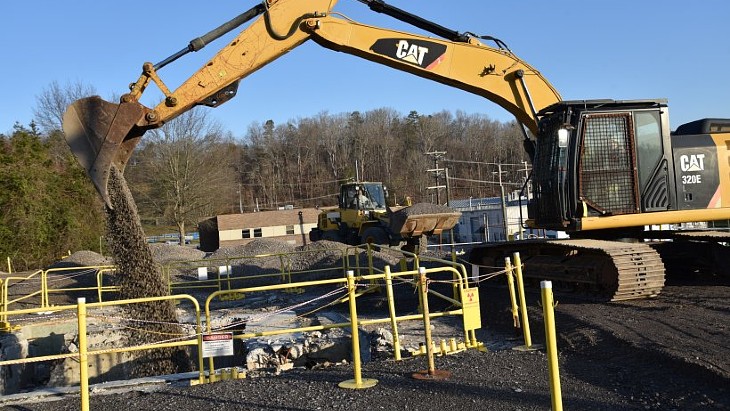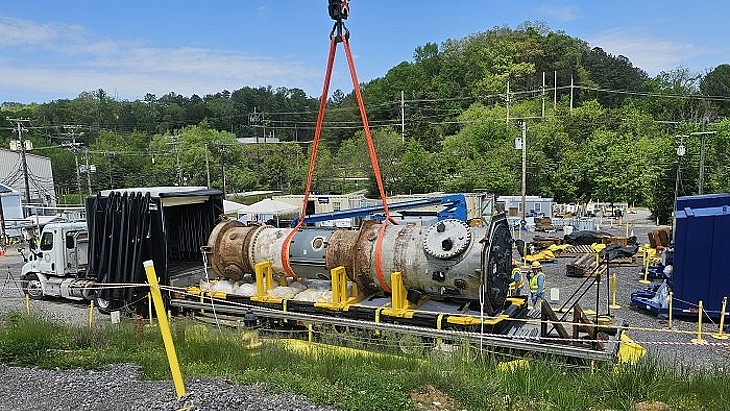The US Department of Energy Office of Environmental Management (EM) workers completed the taking down of the reactor building and disposition of rubble and debris from the facility last year - a process that took about six months - but the reactor vessel had remained on site pending it being shipped for final disposition.
The 30-foot long (9.1 metres), 37,600 pounds (17 tonnes) vessel was loaded by crane onto a truck and shipped to a low-level radioactive waste facility in Clive, Utah.
During its operational years researchers used the reactor in numerous experiments with the core often reconfigured to perform them. As well as being used for training purposes, experiments at the reactor established the feasibility of water-cooled reactors and the test reactor was one of the design prototypes for commercial nuclear power plants, according to information from ORNL.
The Low Intensity Test Reactor became world-famous when a photographer first captured a blue glow caused by radiation in the pool above the reactor. That photo appeared on the cover of the October 1951 issue of Scientific American. The blue glow is Cherenkov radiation, observed when electrically charged particles - electrons and protons - are moving at speeds faster than that of light in a specific medium
.jpg) LITR pictured before the demolition work last year (Image: EM)
LITR pictured before the demolition work last year (Image: EM)

Workers fill in the pit where the reactor previously stood (Image: DOE-EM)
UCOR Project Manager Greg McGinnis said: "Completion of decontamination and transporting the reactor vessel for disposition is a big accomplishment that presented technical difficulties and a unique safety focus to finalise the cleanup at the Building 3005 site."
Acting Oak Ridge National Laboratory Portfolio Federal Project Director Jim Daffron said: "Completing these final tasks are crucial to our ongoing efforts at ORNL."
ORNL was established in 1943 - when it was known as Clinton Laboratories - to conduct pilot-scale production and separation of plutonium for the World War II Manhattan Project. It was also highly involved in reactor design and isotope research and production. EM is responsible for cleanup activities related to the historic operations at ORNL, including 16 inactive research reactors and isotope facilities.






_63865.jpg)
_18570.jpg)
_16159.jpg)





